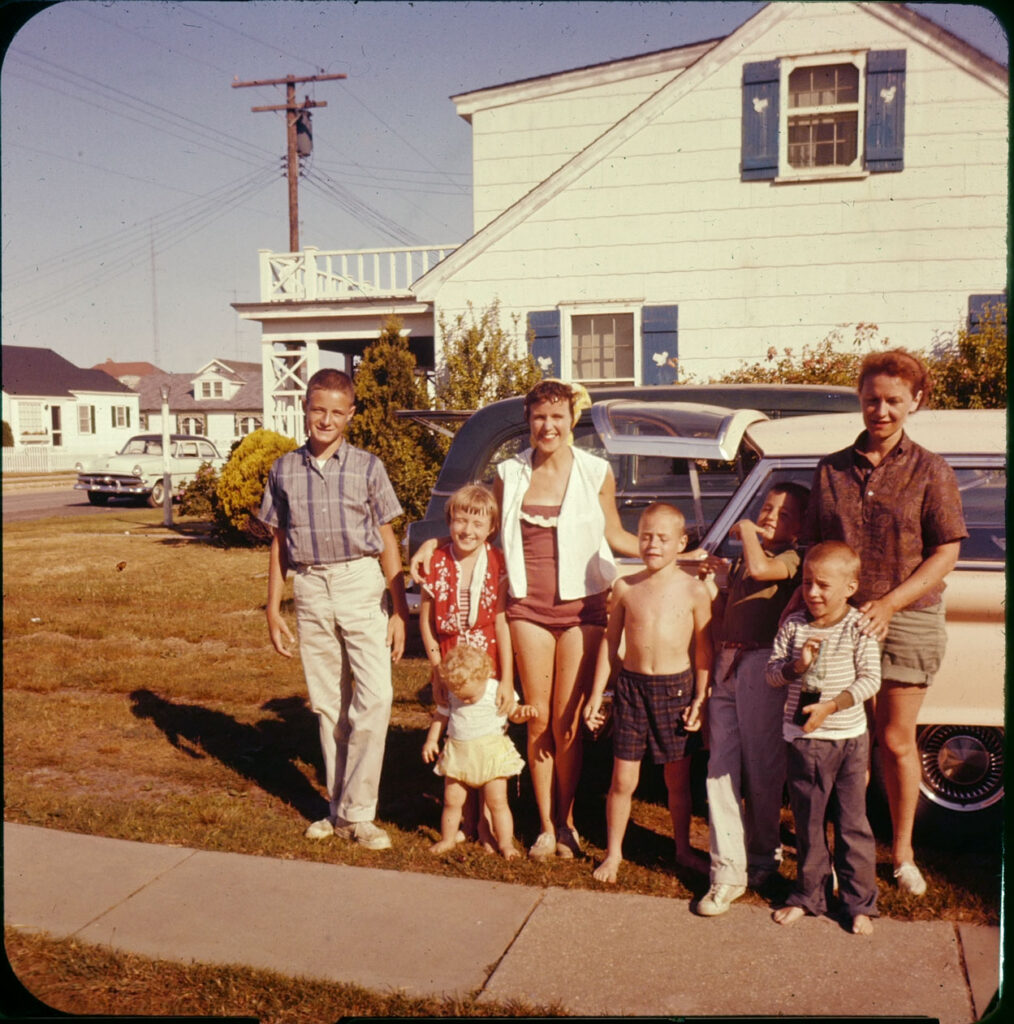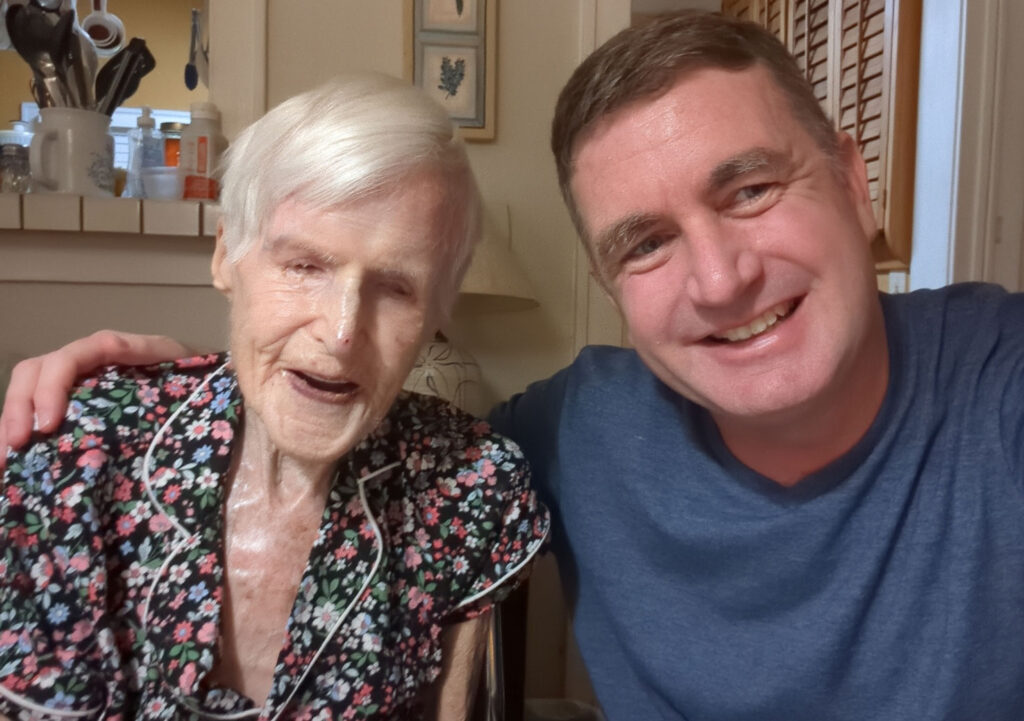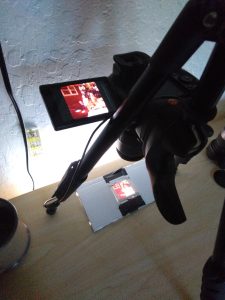
Author: chris
-
Eleanor Gertrude Shann, 1927-2025
My grandmother, Eleanor Gertrude Shann, nee Ryan, passed away on Tuesday, one week after her 98th birthday.
She was smart: After her divorce, as a single mother she attended and graduated from Rutgers University.
She cared about those who needed some help: as a social worker for decades in Morris county, she took a human-first approach to helping families who were most vulnerable.
She loved a great story: with a memory like an elephant, she could paint a picture of a day from 30 years before, clear as a photograph.
I took the opportunity to visit her in July, and we shared some quality time together. I’ll miss her a lot.
Here’s a photo of her (center) in Ocean City, NJ – a place where she had been going every summer since her own childhood – and where I went many times when I was growing up and we would visit the family from CA.

This photo is one of many slides that I recently scanned from boxes of them which were in storage. I’m still figuring out the best way to edit these but they are a great look into that side of my family’s history.

-
animDelay keyframe technique for after effects
I use this technique a lot, and it’s super useful when creating MoGrTs for Premiere. It goes something like this:
- Create a Null object, add at least 3 expression control sliders
On the first slider (named ‘animate’ or something): - Set 4 keyframes from 0-1 to animate in, and 1-2 (or 1-0) to animate out
On the second slider:
*decide which property you want to animate (for my case it was the y position of the layers)
On the third slider: - set the amount of delay you want (in seconds)
Write some expressions that will multiply the value you’re adding or subtracting by the animation slider value. For each layer that you want to follow, use the same expression but add ‘.valueAtTime(time-delay)’, etc. You can set a variable for each next layer where delay = (the slider value)*2, or even use the layer index property to change the delay amount.
Some other expressions that come in handy here are the linear() interpolation, if/else statements, layer index, checkboxes, etc. It depends on the kind of property you’re animating.
Comment below or on the video and I can expand on some of the things covered here.
- Create a Null object, add at least 3 expression control sliders
-
Scanning history
There were moments captured in time, with people close to me and some I never met, living life and growing up, telling inside jokes the meaning of which only family would understand.\nI have the privilege of digitizing several boxes of slides from my grandmother, brought home by my mom. She doesn’t know what’s on them but recalls viewing a slideshow in her childhood, and many of those images are probably in these boxes. I am getting a look at the history of her family. I can recognize the people, some of the dynamics, and remember some of the stories and places that she has spoken about, now with aged, red-shifted images to bring them to life. I don’t have a film scanner, so I set up a lightbox in my office with a camera to capture them.

It’s worked well so far! Next will be the process of cropping, color correcting, naming. Then the best part: sharing with those who will find meaning in them! I wish my grandmother could still see them (her vision is not good enough), I know that she would have loved to have experienced them again. Hopefully someone with some insight can describe the images to her and she can tell me the stories behind each of them.

Be kind to yourself.
Chris
-
Every Editor does this…
You hop from one program to another, sometimes within the same project… but for every program, there are often multiple output formats, and many of them are not interoperable. This is of course by design – each wants to keep you in their own ecosystem without reason to do any other tasks elsewhere. This results in a usually satisfactory experience, but is not perfect for every workflow. If I’m not doing any motion graphics in After Effects, I will usually use Resolve for the edit. If I want to emphasize the audio design, or need that fine level of control over the audio, I find Reaper to be my go-to. But as I mentioned at the top, it’s not typically just one program- this is why it’s a work flow. You move through a series of stops, each program a waypoint offering a different set of features, capabilities, and control.
For this example, I am using the text-based editing features of DaVinci Resolve to cut a podcast (but you could use Premiere as well). The other producer has taken the interview transcripts, and created a ‘paper cut’ with some corresponding timecodes. I could honestly cut the whole thing in Resolve – I find it to be a capable Audio editor, and I know all the shortcuts and interface really well – but I wouldn’t raise it to the status of DAW. I want to do the fine cutting and adjustments inside of Reaper.
Of course, just because I want to, that doesn’t make it so. What could this workflow look like? My initial thought was:- Lay out the timeline using the text-based editing in Resolve. No effects, not even any fades or volume adjustments. Just the clips in a single track in a timeline.
- Export the Timeline as an EDL, or FCP XML
- Convert this to a file that Reaper can read and parse (using magic?)
- Edit and finish in Reaper
- Profit!
In order to tackle step 3, I attempted to create a python script with the help of ChatGPT (I’m not proud of it). If you’ve ever tried to create custom scripts for something like this using AI, you know that it will either work the first time, or fail forever and ever, mocking you with how close it comes to actually working. I know a little bit about Python coding, and I could see where it was failing, but I am not smart enough to bridge that gap on my own, dear reader. What felt like it should have been a couple of rounds of iterating turned into hours in chat purgatory, coming up against the same error messages while the output just circles the target, not getting closer but always just different enough to give you hope that the next iteration will do it. Honestly, part of this was probably user error, but I tried all the prompts I could think of. No dice.
I’ll back up a moment… before I began the Altman-Assisted marathon, I looked at who might have already tackled this challenge. Surely there existed a github repository that could do this? Some brilliant, benevolent coder who saw the need and sat down one night with a couple of red bulls and powered through the challenge, emerging with a perfectly formatted program with a passable UI or command-line that could take your .prproj, .drp, .edl, .fcpxml, .rpp, and spit out a project format to work in anything you wanted. Alas, this was not the case.
I did find, however, a couple of paid programs:AATranslator – this is by all accounts exactly what I described above, or at least close to it. $79 for the ‘Standard’ license or $249 for the ability to go to and from .prproj, AAF , omf, and protools. Not cheap! But lots of people have a lot of great things to say about it- most coming back to the fact that ‘it just works!’
Vordio – two pricings here:
- Standard (£80 per user)
- Advanced (£160 per user) – An advanced license is required for AAF conversion and Compare/reconform.
I went with Vordio, as the standard seems to have everything I need.
If this saves me even an hour per project, then it pays for itself within a couple of projects. Well worth it.
I often try to find the cheaper route. If I can just do something manually, I’ll probably do it that way, before dropping any $ for a tool. I’ve also found that since moving to a Linux-based environment, I’ve become accustomed to free software that is amazingly capable- so paying or not isn’t often a decision I need to make. But this was one of those situations where it makes sense.
Being able to harness the best parts of what these different editing programs have to offer, and working between them, can be a game changer. We’ll see where it might falter – I don’t expect it to be perfect – but I’m excited to save time using this new toy.
Happy cutting!
-
Morgan Hill from the air
A quick flight with the Mavic Air 2 over Morgan Hill, CA.
